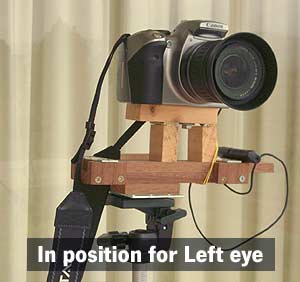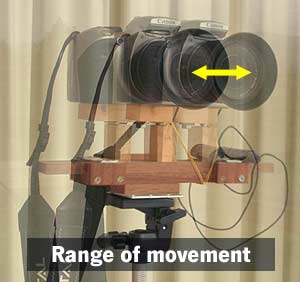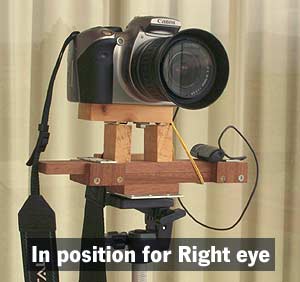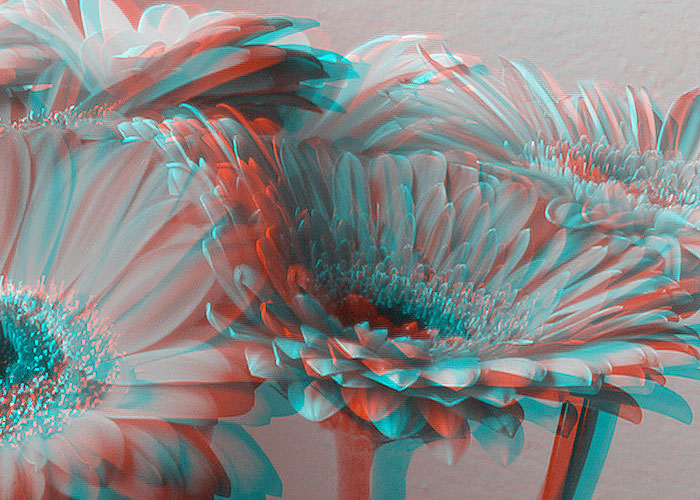
3D PhotographsI have been interested in 3D photographs for more than 40 years. I became interested in 3D photography after seeing an advertisement for a special adapter for taking 3D slides, made by Pentax. I bought the adapter, and companion slide viewer. The system effectively split each slide image into 2 slightly different views of the scene in front (one from the left eye and one from the right eye). The results were amazing, and I realised that the 3D component of what we see around us is so important – like seeing in colour, rather than just in shades of grey. Analysing how the system worked gave me an excellent understanding of how our 3D vision and perception is gained. I also realised how subtle the whole process is, with distances being interpreted from very small differences in horizontal displacements. That Pentax system allowed full colour images to be seen in 3D. A big problem with that system however was that each slide needed to be viewed by the special slide viewer, and it was difficult to share the results with other people. This turns out to be the big problem with just about all 3D systems. There have been a number of 3D photography systems developed over the years, including now 3D TVs with special viewing glasses. All of the 3D photographs presented in this display are anaglyphs. Anaglyphs are composite images made by combining two filtered greyscale images – one image for the left eye, coloured cyan (a greeny blue), and an image for the right eye, coloured red. To see the 3D construction properly, you need to view the images back using special coloured glasses, with a red filter in front of the left eye, and a cyan filter in front of the right eye (this is the accepted convention for anaglyph photographs). I have a pair of such glasses (made of cardboard and thin plastic filters), that I received as part of a newspaper give away for viewing 3D photographs published in the newspaper. These glasses are very cheap, and have been used for a number of 3D movies in cinemas. If you don’t have any 3D glasses, you could make reasonable glasses cheaply from cardboard and coloured cellophane. Most of the images shown in this display are composites of 2 separate photographs (one from the left eye position and one from the right eye position). These photographs were taken from a special sliding tripod adapter I made, that fits to a standard tripod. It basically allows the camera to slide laterally about 65mm, so that it can take a photograph for the left eye, then slide across to the position for the right eye for another photograph. This 3D 'sliding-bar' adapter, shown below, allows me to use the camera in either a horizontal or vertical format, which is handy. |
 |
 |
 |
The resulting images here are all greyscale images in 3D. I have found that in some ways this enhances the results of the 3D perception, because it’s as if everything in the scene has been sprayed with grey paint, and now objects are more clearly defined by their 3D information. It is amazing how well these images work, because they rely on very subtle horizontal differences between the two views, and the image resolutions for the photographs shown here are quite low (maximum of 700 pixels wide). I hope you can get some coloured glasses to view these images. Many people do have a suitable pair of coloured glasses. There are websites around that sell inexpensive coloured 3D glasses. I hope you enjoy the
images. |
 |
Detail from "Gerberas in a Plastic Vase". |